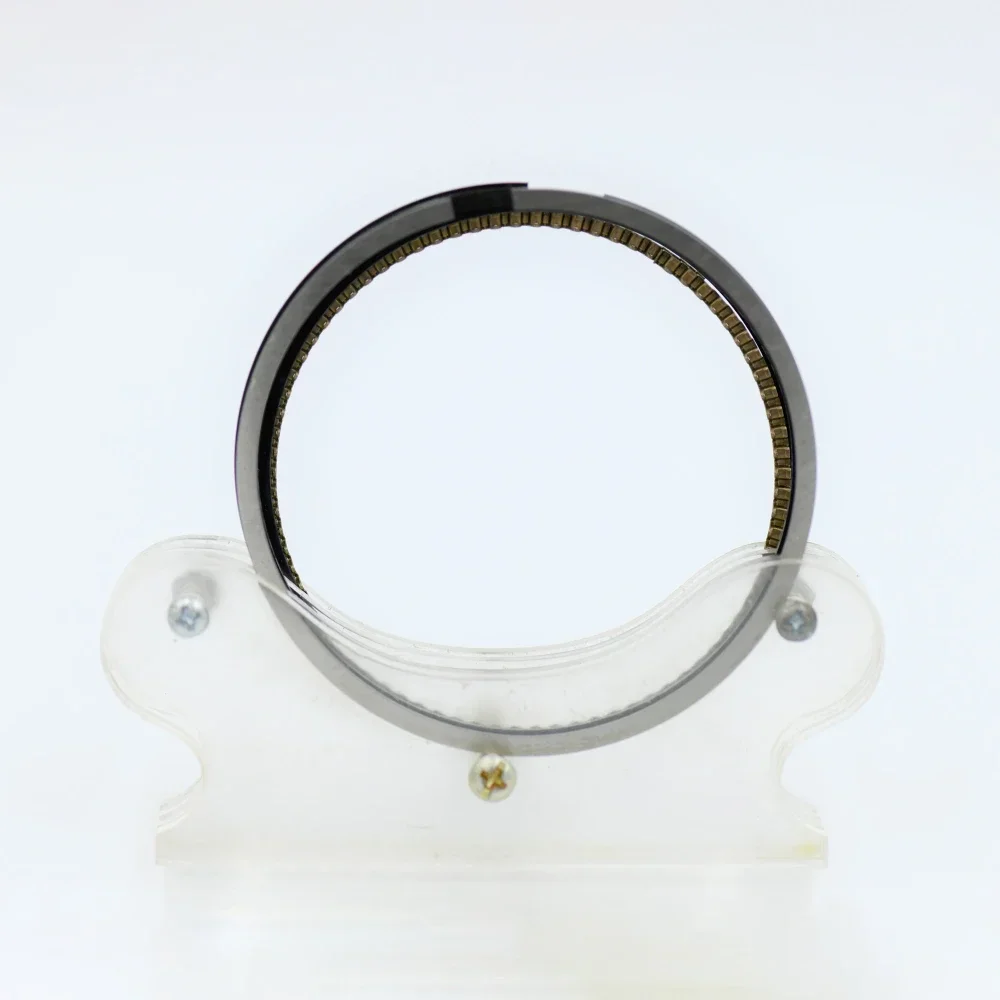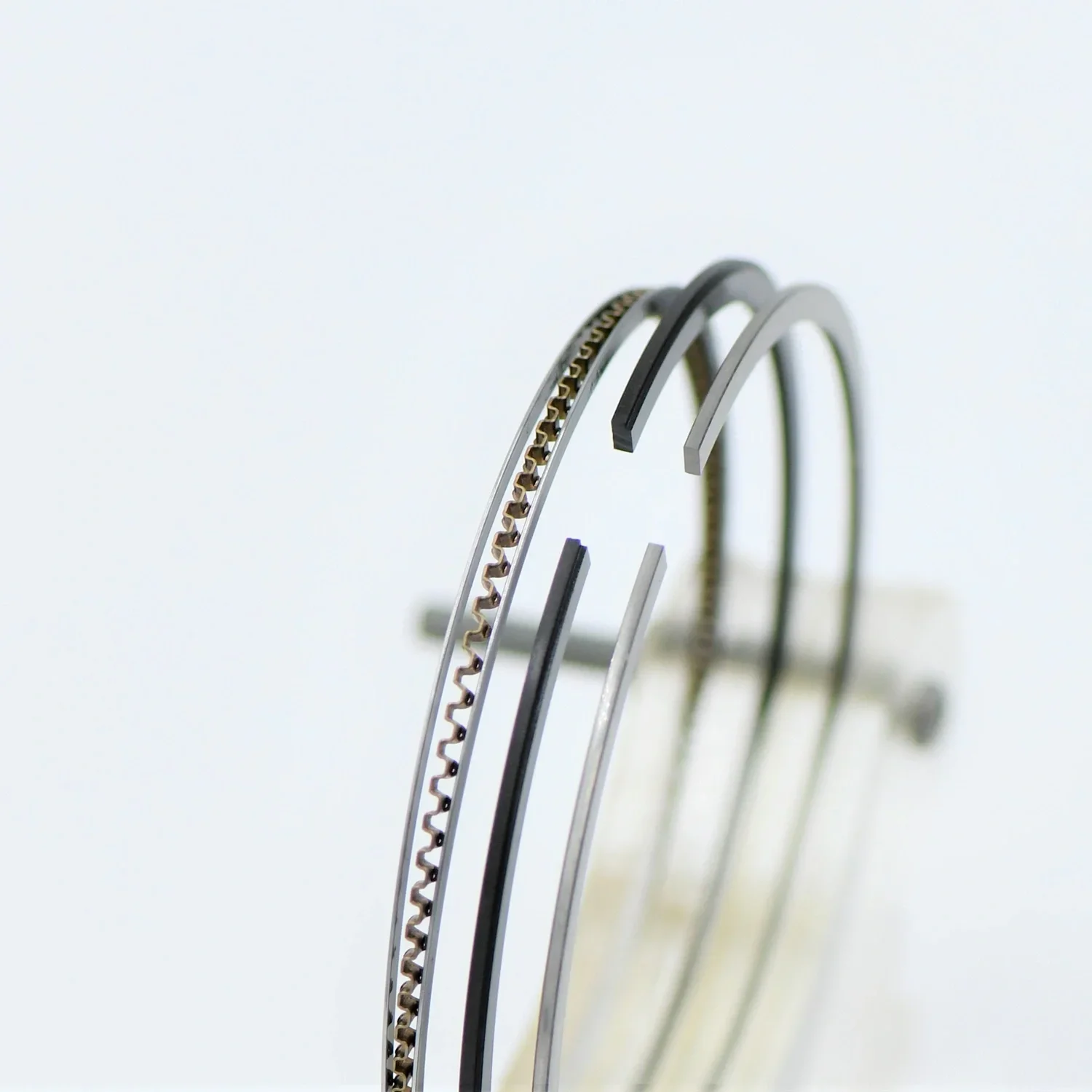Exploring the intricate world of automotive engineering, the significance of Toyota piston rings emerges as a crucial component in engine performance. From enhancing combustion efficiency to ensuring proper sealing within the cylinder, these rings play a pivotal role in maintaining optimal functionality. This blog post delves into the nuanced aspects of Toyota piston rings, shedding light on their materials, design, and impact on overall engine operation. By examining their composition and function, readers can gain a deeper understanding of how these small yet vital components contribute to the smooth functioning of Toyota engines.
Engine Basics and Piston Functions
Piston Function
Pistons, crucial parts in an engine, move up and down within cylinders. They play a vital role in the combustion process by compressing the air-fuel mixture.
Pistons are driven by the expanding gases resulting from fuel combustion. As they move downwards, they create power that drives the vehicle.
Piston Rings Role
Piston rings, located around the outer diameter of the piston, serve as a basis for maintaining compression within the combustion chamber.
These rings help seal the gap between the piston and cylinder wall to prevent gas leakage during combustion. Without proper sealing, engine efficiency decreases significantly.
Compression Maintenance
The primary function of piston rings is to maintain compression within the cylinder. They ensure that the air-fuel mixture remains at the top of the cylinder during combustion.
Symptoms of Piston Ring Damage
Blue Smoke
Blue smoke emanating from the exhaust is a clear indication of damaged piston rings. This occurs when oil leaks into the combustion chamber and burns along with fuel, resulting in the distinctive blue-colored smoke.
Decreased Engine Performance
A decrease in engine performance can be attributed to worn piston rings, leading to inadequate compression within the cylinders. This affects the engine's power output and overall efficiency, causing issues like sluggish acceleration and reduced horsepower.
Increased Oil Consumption
Excessive oil consumption is another common symptom of piston ring damage. When the rings wear out, they fail to properly seal the oil within the combustion chamber, causing it to burn off during the fuel combustion process. This results in a noticeable increase in oil usage.
Engine Knocking Sounds
Engine knocking sounds, often described as metallic tapping or knocking noises, can also indicate problems with piston rings. When the rings wear down, there is increased clearance between the piston and cylinder wall, leading to abnormal noise during engine operation.

Importance of Piston Ring Maintenance
Regular Inspection
Piston rings play a crucial role in the engine's operation, ensuring proper compression and preventing oil from entering the combustion chamber. Regularly inspecting piston rings can help identify issues early on.
Inspecting piston rings involves checking for signs of wear, such as increased oil consumption, blue smoke from the exhaust, or a drop in engine performance. By catching these issues early through routine inspections, mechanics can address them promptly.
Prompt Replacement
When piston rings wear out, they can lead to decreased engine efficiency and even more severe damage if left unattended. Replacing worn piston rings promptly is essential to maintain optimal engine performance and prevent further complications.
Prompt replacement of worn piston rings can help avoid costly repairs down the line. Ignoring this maintenance task can result in reduced fuel efficiency, loss of power, and eventually lead to major engine problems that require extensive repairs.
Cost-Effective Maintenance
Proper maintenance of piston rings not only ensures smooth engine operation but also helps in saving money in the long run. By investing in regular inspections and timely replacements, car owners can prevent expensive repairs that may arise due to neglected piston ring issues.
Maintaining piston rings is a cost-effective approach that contributes to prolonging the overall lifespan of the engine. It is a small yet significant step that can have a substantial impact on the longevity and performance of the vehicle.
Steps for Replacing Piston Rings
Disassembly Process
To replace piston rings, start by disassembling the engine. Remove the cylinder head, oil pan, and connecting rods.
Begin by detaching the cylinder head to access the pistons. Then, remove the oil pan to reach the lower part of the engine.
Removing and Replacing Rings
After accessing the pistons, use a piston ring compressor tool to compress the rings. Gently push them out of their grooves.
Carefully slide out each old ring and ensure that you don't damage the cylinder walls during this process.
Importance of Manufacturer Guidelines
It's crucial to follow manufacturer guidelines when replacing piston rings. These guidelines ensure proper installation and prevent future issues.
Enhancing Engine Performance with Proper Care
Regular Maintenance
Maintaining vehicle health involves regular servicing and inspections to detect issues early on. By addressing problems promptly, one can prevent costly repairs later.
Quality Fuel and Lubricants
Using high-quality fuel and lubricants is crucial for optimizing performance. These components directly impact the engine's efficiency and overall longevity.
Impact on Lifespan
Proper care not only enhances performance but also extends the lifespan of engine components. Regular maintenance can significantly reduce the need for repair or replacement.

Final Remarks
The detailed exploration of engine basics, symptoms of piston ring damage, maintenance tips, replacement steps, and performance enhancement strategies underscores the critical role that piston rings play in an engine's functionality. Proper care and timely maintenance are imperative to ensure optimal performance and longevity of Toyota vehicles. By understanding the significance of piston rings and following the recommended maintenance practices, individuals can safeguard their engines against wear and tear, ultimately enhancing their driving experience.
For Toyota owners and enthusiasts alike, staying vigilant about piston ring health is key to preserving engine efficiency. Regular inspections, adherence to maintenance schedules, and prompt action upon detecting issues are fundamental practices to uphold. By prioritizing these aspects, individuals can not only prolong the lifespan of their engines but also maintain peak performance levels for their beloved Toyota vehicles.
Frequently Asked Questions
What are the main functions of piston rings in a Toyota engine?
Piston rings in a Toyota engine help seal the combustion chamber, regulate oil consumption, and aid in heat transfer. They also assist in maintaining compression within the cylinders for efficient engine performance.
How can one identify symptoms of damaged piston rings in a Toyota vehicle?
Common signs of damaged piston rings in a Toyota include excessive oil consumption, blue smoke from the exhaust, loss of power, and poor engine performance. A compression test can confirm if piston ring damage is present.
Why is regular maintenance of piston rings important for a Toyota engine?
Regular maintenance of piston rings in a Toyota engine ensures optimal sealing, prevents oil leakage into the combustion chamber, maintains proper compression levels, and prolongs the engine's lifespan. Neglecting this maintenance can lead to costly repairs.
What are the steps involved in replacing piston rings in a Toyota engine?
The process involves disassembling the engine, removing the pistons, taking out the old rings, cleaning the grooves, installing new rings with proper orientation, reassembling the engine components carefully, and conducting tests to ensure proper functionality.
How does proper care of piston rings enhance overall engine performance in a Toyota vehicle?
Proper care of piston rings in a Toyota leads to improved compression, reduced oil consumption, enhanced fuel efficiency, increased power output, smoother operation, and overall longevity of the engine. Regular maintenance is key to sustaining peak performance.






